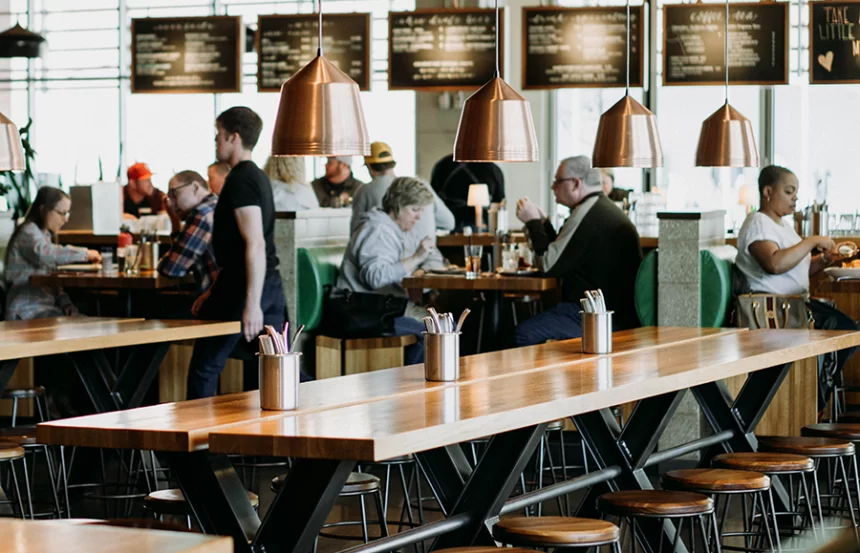In the past few years, the restaurant industry has rapidly evolved, with technology being the most significant force behind this transformation. These days, technology has seeped into nearly every crevice of life, and it’s no different for the restaurant industry. Whether it’s online ordering or analysing the profitability of a restaurant, here’s how technology is changing the restaurant industry.
The Rise of Ghost Kitchens
Online food delivery has become so popular that it has created a new category of restaurants known as ghost kitchens. No, there aren’t any ghosts there; it’s just a restaurant that only exists online, offers all of its delicacies for delivery, and has no physical dine-in area.
Mostly operated from homes or shared spaces, these virtual kitchens dramatically reduce their overhead costs and concentrate solely on responding to online delivery orders. Powered solely by technology, the concept of ghost kitchens is going strong, with current estimates suggesting the ghost kitchen industry will reach over $71 billion by 2027.
Blending the Physical & Digital Worlds
Innovative restaurants are integrating tech into their physical storefronts to provide a different sort of eat-and-repeat experience altogether: a true “phygital” experience where the physical and digital worlds blend.
For instance, burger chain Shake Shack has tried out some hybrid drive-thru lanes at certain sites in suburban areas. The drive-throughs are separate from the Shake Shack dine-in area and feel more like a checkpoint. Customers place orders in advance on the Shake Shack app and use a special drive-thru lane to pick up their food without leaving their car or talking to anyone.
Some even more interesting technologies are also making their way into restaurant drive-thrus. McDonald’s is now experimenting with automated drive-thru machines that will suggest side items based on various factors. The goal of smart drive-thru systems is to improve average order size and speed up service.
Restaurant Operations Optimised Through Advanced POS Systems
The adoption of more advanced POS systems is also transforming the way brick-and-mortar restaurants operate. Highly advanced POS software, such as the one offered by 3S POS, does more than just handle payments.
First of all, the integrated CRM capabilities within POS systems allow restaurants to record detailed information on every customer that comes through their doors. This data can be used to plan and execute highly targeted marketing campaigns and offers that are tailored to the spending and eating habits of your customer base. If a customer orders a certain dish on a regular basis, they can be offered discounts or a free portion as part of the targeted campaign.
Cloud-based POS helps restaurants create real-time data and analytics that are easily accessible anywhere, anytime. With all this information on hand, owners can save innumerable amounts of time trying to track sales, monitor inventory levels, and easily identify what their top-selling and underselling menu items are right off the bat. These insights can be crucial for restaurants to be able to make data-driven decisions to drive revenue higher.
Increasing Popularity of Food Delivery Platforms
The most dramatic development has been the rapid expansion of third-party delivery services such as Deliveroo, Uber Eats, and JustEat. These apps or platforms provide restaurants with a perfect solution to increase sales and seamlessly integrate home delivery into their operating model.
Delivery providers like Uber Eats offer a new way to survive for restaurants, giving them access to customers that were unreachable before. For consumers, these softwares have transformed the dining experience into more of an online shopping experience. With the swipe of an app, diners can access pretty much any food within reach.
AI Integration
AI is recasting every aspect of the restaurant industry, from the front of house to the back, generating operational efficiency and an improved dining experience. Using AI-powered chatbots for ordering, reservations, and personalised menu recommendations by analysing customers’ past preferences, AI is turning restaurants into customer-centric enterprises.
Moreover, AI-driven inventory management and demand forecasting are also helping restaurants reduce waste and make the supply chain more efficient. As AI emerges, it will continue to become more important for the success of any restaurant as the industry tries to improve and keep pace with technological advancements.
Challenges & Considerations
Naturally, adding new restaurant technologies comes with its own set of difficulties. Here are some of the top performers.
- Teaching your staff how to use the new platforms.
- Keep customer information safe.
- Data privacy and compliance.
- Adapting to fast-moving technology trends.
- Mixing tech investments with other business needs.
- Losing human connection in a fully virtual world.
- Technical issues and downtime.
- Gaining acceptance from the less tech-inclined staff.
- Choosing the best tech solutions for your restaurant.
Although there are challenges, those who best use digital tools and technology to enhance the customer experience will lead the restaurant industry in the future.
Read More From Techbullion And Businesnewswire.com








